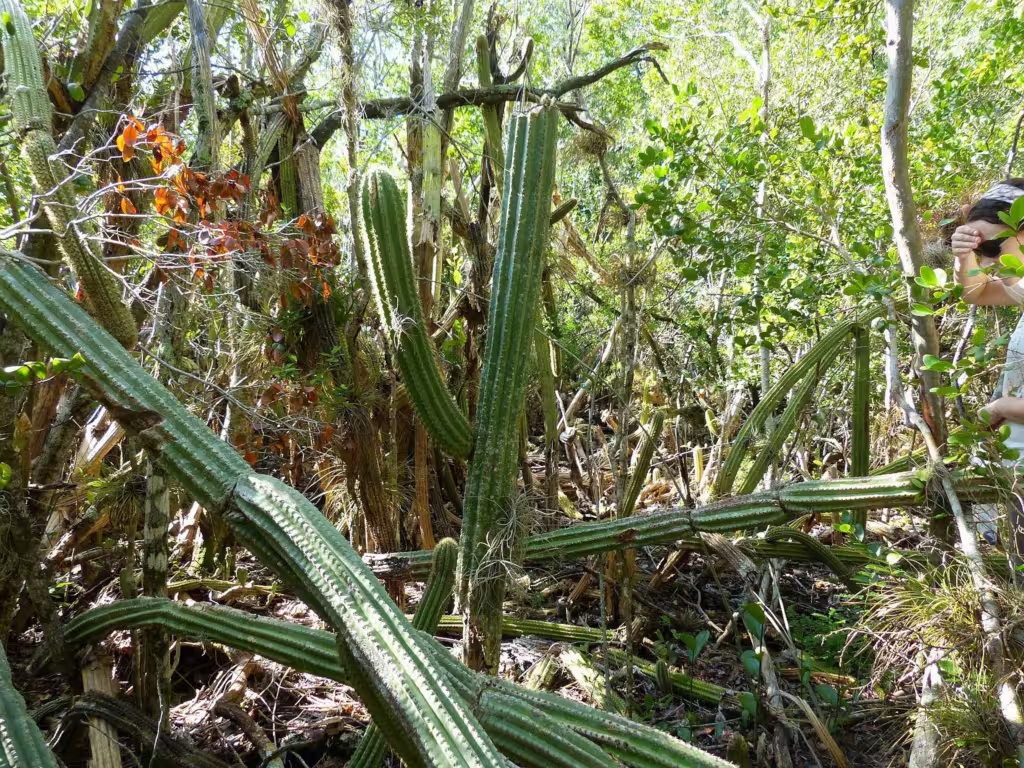Reality has hit whoever doesn’t believe in climate change, because it has done its damage: a cacti species is the first to go extinct due to rising sea levels.
The Key Largo tree cactus, or ‘Pilosocereus robinii,’ is a unique species native to the Florida Keys. Known for its tall, columnar stems that can reach impressive heights, it has long been a part of the vibrant ecosystem of the Keys. Unfortunately, like many species around the world, it faces the threat of extinction, primarily due to rising sea levels driven by climate change.
The Key Largo tree cactus thrives in a specific habitat characterized by well-drained, sandy soils, and a subtropical climate. It is usually found in coastal forests, where it coexists with other native plants and wildlife. This cactus is not just a solitary entity; it plays a vital role in its ecosystem. Its flowers attract pollinators and its structure provides nesting sites for birds and insects. However, the delicate balance of this ecosystem is increasingly threatened by environmental changes.
As global temperatures increase, glaciers and ice caps melt, contributing to higher ocean levels. The Florida Keys, with their low elevation, are particularly susceptible. According to the National Oceanic and Atmospheric Administration (NOAA), sea levels in the region could rise by more than two feet by 2050 if current trends continue. This rise in sea levels leads to increased salinity in the soil and flooding of coastal habitats—two factors crucial to the growth and reproduction of the Key Largo tree cactus. As the soil becomes saturated with saltwater, the cactus cannot absorb the nutrients it needs, leading to stunted growth.
The extinction of the Key Largo tree cactus has a domino effect on its environment. As a keystone species, the cactus supports various forms of wildlife. The loss of this cactus can disrupt food chains and habitat availability, leading to a decline in other species that rely on it.
Moreover, the decline of the Key Largo tree cactus is indicative of a larger trend. Many plant and animal species are struggling to adapt to the rapid changes in their environments. As more species face extinction, the overall biodiversity of the region diminishes, leading to less resilient ecosystems.

While the situation may seem dire, there are ongoing efforts to conserve the cactus’ habitat. Local organizations, conservationists, and governmental bodies are working together to monitor cactus populations and restore coastal habitats. These initiatives include:
- Efforts to restore native plant communities which can improve the resilience of the ecosystem and provide a more stable environment for the cactus.
- Educating the public about the importance of the Key Largo tree cactus and the threats it faces can foster community support for conservation efforts.
- Ongoing research into the biology and ecology of the cactus can improve conservation strategies and adaptive management practices.
Ultimately, the preservation of the Key Largo tree cactus is a collaboration with broader climate change mitigation efforts such as reducing greenhouse gas emissions, promoting sustainable land use practices, and protecting coastal environments.
By tackling climate change at its source, we can help safeguard countless other species at risk of extinction. It’s a collective responsibility that requires action from individuals, communities, and governments alike.
As we reflect upon the cactus’ unfortunate fate, it’s crucial to understand that every species, no matter how small, contributes to the intricate web of biodiversity. Protecting these species is not just an environmental issue; it’s a moral imperative for future generations.

